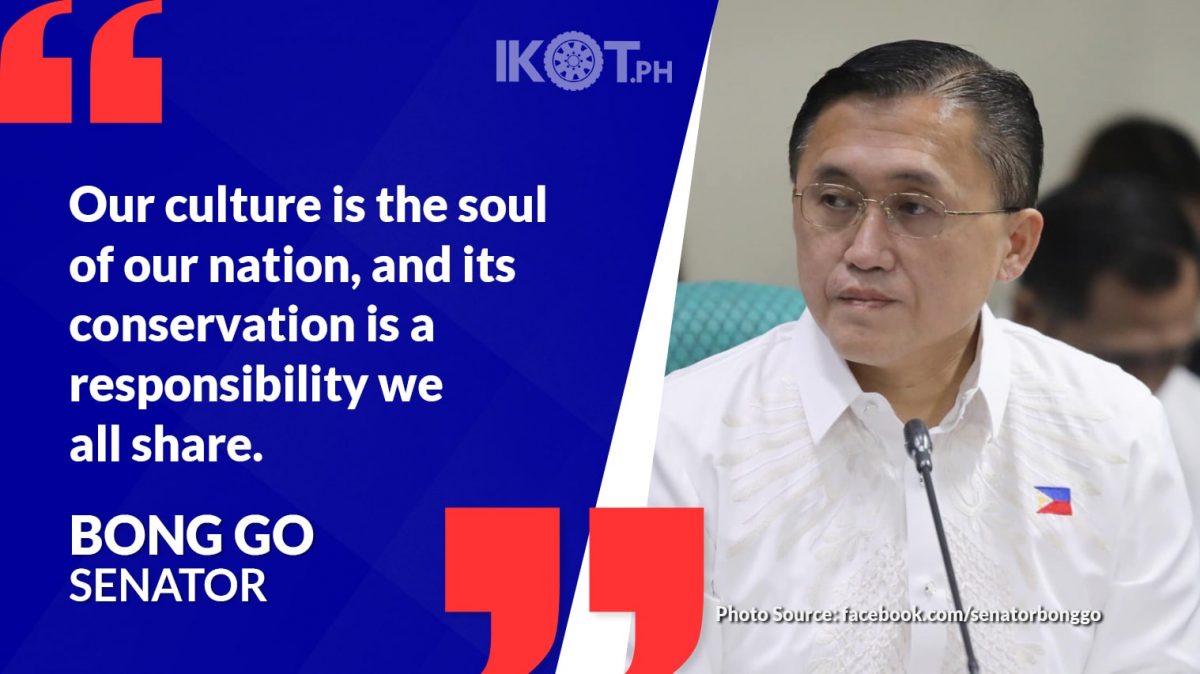In a significant stride towards preserving the rich tapestry of the Philippines’ cultural heritage, Senator Bong Go has expressed his gratitude to President Ferdinand Marcos, Jr., for signing Republic Act No. 11961 into law, a measure aimed at fortifying the conservation of the nation’s cultural legacy through comprehensive cultural mapping.
The bill, co-authored by Go, underscores the nation’s commitment to safeguarding its diverse cultural heritage, ensuring its transmission to future generations.
Through cultural mapping, local government units (LGUs) are mandated to chart their cultural assets across their respective domains, encompassing both tangible and intangible, as well as natural and built heritage.
“Co-author din tayo sa SBN 1841, o Amending RA 10066 (National Cultural Heritage Act of 2009) na ang layunin ay maipreserba at maprotektahan ang ating mayamang pamanang kultura sa pamamagitan ng cultural mapping,” Go said.
“Sa ilalim nito, aatasan ang local government units na magkaroon ng record ng kanilang cultural assets sa mga lugar na kanilang nasasakupan. Para sa akin ay napakaimportante na mapangalagaan ang ating mayamang kultura para naman maisapuso at maipagmalaki ng mga susunod pang henerasyon ng mga Pilipino,” the legislator emphasized.
The measure seeks to ensure that the rich legacy of the nation remains intact and vibrant for future generations.
“By enacting this bill, we are not just preserving physical artifacts, but also the essence of what it means to be Filipino.”
“The passage of this law marks a momentous occasion for the Philippines. By enacting this bill, we are not just preserving physical artifacts, but also the essence of what it means to be Filipino. Our culture is the soul of our nation, and its conservation is a responsibility we all share,” the senator added.
Go said the cultural mapping bill will not only assist in the identification and preservation of tangible heritage but also play a pivotal role in fostering a stronger sense of cultural pride and awareness among Filipinos.
Through community involvement and collaboration, the legislation aims to facilitate a more profound understanding of local traditions and promote intergenerational knowledge transfer.
“The institutionalization of cultural mapping is a grassroots approach that empowers local communities to identify and assign cultural value to properties that are important to them.”
“The institutionalization of cultural mapping is a grassroots approach that empowers local communities to identify and assign cultural value to properties that are important to them,” he explained.
“This approach also recognizes that heritage is not just about preserving buildings or artifacts, but also about preserving the intangible aspects of cultural identity that are often overlooked,” Go added.
The process of cultural mapping involves the meticulous identification, documentation, and assessment of cultural assets within a specific locality. Through this comprehensive inventory, LGUs can harness their cultural heritage to foster heritage tourism, enlighten the public, and shield these precious resources from degradation or harm.
To facilitate compliance with the cultural mapping requirement, the National Commission for Culture and the Arts, alongside other pertinent cultural agencies, will extend technical and financial support to LGUs.
“As the country continues to evolve, initiatives such as the cultural mapping bill underscore the nation’s resilience in preserving its identity. Let us collaborate to safeguard our heritage and champion our diverse Filipino identity,” Go concluded.


